This!!! I've Have Had My Alpha Inizia (136€ Back Then) For About 12 Years Now And It Still Runs Like
This!!! I've have had my Alpha inizia (136€ back then) for about 12 years now and it still runs like a powerhouse! My basic rule of thumb is if it has a shiny screen and lots of fancy stitche s you won't need them much anyway
A follow-up to how cheap they can make a sewing machine:
[Original post]
Okay, but, How expensive can they make a sewing machine?
So, if we start out with a "cheap" machine, what happens when we go up in price.

Welcome to the Brother CS4000. It's a computerized machine and usually runs at like $130 right now. It does all kinds of cool things! The only thing that it doesn't do is last very long.
Well, here's what happens if you take it apart and take out all the circuit boards:

No, there's no missing central component.
If you've never taken a sewing machine apart, this might not look wrong, so let me explain.

This is a Singer Izek, and the same machine with the plastic outer casing removed. Inside, there's a metal frame that all the components are attached to.
See, most modern sewing machines are plastic on the outside, but the plastic is just a cover. The insides have a frame, and the mechanism can function without the shell at all.
That Brother up there doesn't have a frame at all. Everything that should bolt to the frame is just attached to the plastic housing. This is a problem for a lot of reasons. Notably, if the machine is being held up by flexible plastic, then there's no way for the machine to be consistent and precise. Also, the plastic shell serves as a protection, like a bike helmet for your sewing machine. When the components are attached to the outside, your machine becomes very fragile, because hitting or tapping the outside of the machine is the same as hitting or tapping the inside. This is why we don't allow newborn babies to ride bicycles, btw.
Even in a metal-frame machine, there's going to be plastic parts. Putting plastic parts in a sewing machine makes it quieter, more portable, and cuts down on maintenance. People don't fucking do the maintenance anyway, so finding ways to reduce it is going to help the machine run well longer.
Unfortunately, most machines are sold in boxes, where the person selecting the machine has to make a choice by reading the outside of the box. This means things like "This machine has 4672 stitches!" looks good and "this machine has 12 stitches but its brain is not basically exposed to the elements," doesn't. Any description of superiority that requires a human to explain it instead of a catchy tagline just isn't going to sell.
So, when you're looking at the Brother CS 4000 and the Baby Lock Zest, they're about the same price. The Zest has like 12(?)ish stitches, half of which are double-action (the same stitch but it goes forwardbacky instead of just forward) and no width control, and the CS 4000 has more technology in it than we took on the first manned trip to the moon, you might ask why they're the same price. Well, in the Zest, they cut down the features like easy bobbin setting, number of stitches, complexity of internal cams, and other features that you get in higher end machines.
In the CS 4000, they just got rid of...you know...the insides. The. The important parts. Imagine a car where there's no chassis and they just glued the engine to the underside of your hood.
Not all plastic machines are the same.
Anyhow, since I'm possibly unique in the world of budget lolita sewing blogs to be able to make a post about the most expensive sewing machines possible, I'm willing to try to undertake that expedition. Stay posted.
More Posts from Ignoranceconnoiseur and Others
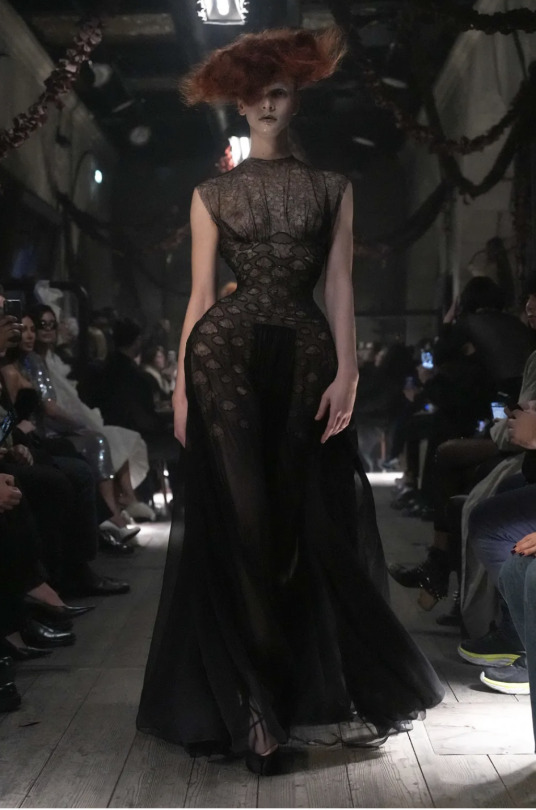



maison margiela spring 2024 couture
You know what, since I'm thinking about it anyways, let's talk formalwear accessories. Most of these are traditionally menswear but a bit of gender fuckery is good for the soul, and frankly most of these are about making your mass-produced clothing fit and lay properly without having to go to the tailor.
Shirt stays: these go around your thighs to hold your shirt down, so that it stays smooth and tucked in. They're usually elastic, with 1-3 clips, and if you wear skirts frequently this is a GREAT way to make sure your top doesn't ride up. The clips will be visible if you're wearing something tight, so loose pants or skirts are where these do best. There's also an insane version that clips to your socks, but that is for lunatics. If you wanted, you could also use one of these clips to hold up thigh-highs.
These do a great job of smoothing and narrowing the waist area by keeping your shirt from bunching there.


Sleeve garters: usually metal, leather, elastic, or silk. These are usually worn with button-down shirts to adjust where your cuff falls on the wrist or hand. They're properly worn on the upper arm, and you pull the fabric of the sleeve above the garter until you cuff is where you want it. Because this creates a puff of sleeve at the bicep, it also broadens the appearance of the shoulders. It's great if you're working with your hands or if your sleeves are often too long for your preference.
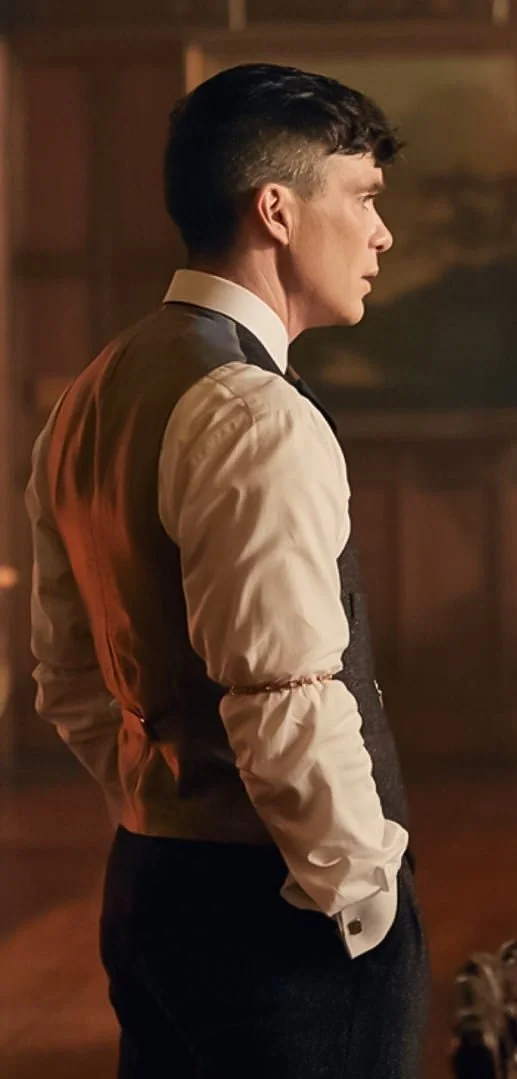

Waistband clip or belt adjustment clip/buttons
Three different ways of tightening the waistband of a pair of pants or a skirt. You're not going to get more than an inch or so tighter without weird bunching, and for most of these you'd want them to be hidden under a shirt or jacket, but they do the job if that's something you're having issues with.
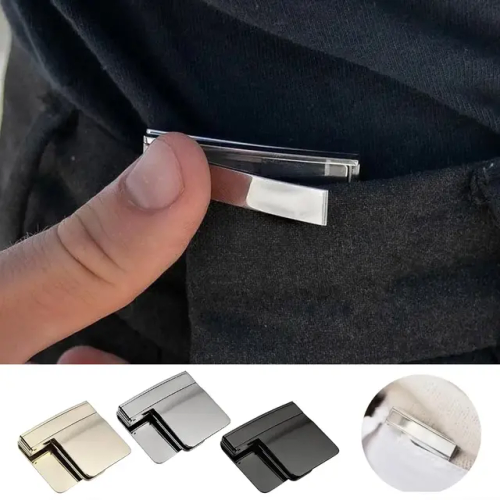


Collar pins: There are so many fun ones out there, both with and without chains. They're not terribly practical, though the slight weight may help keep your collar where you want it. Also consider collar tips, which pin (surprise) to the very tips of your collar points.


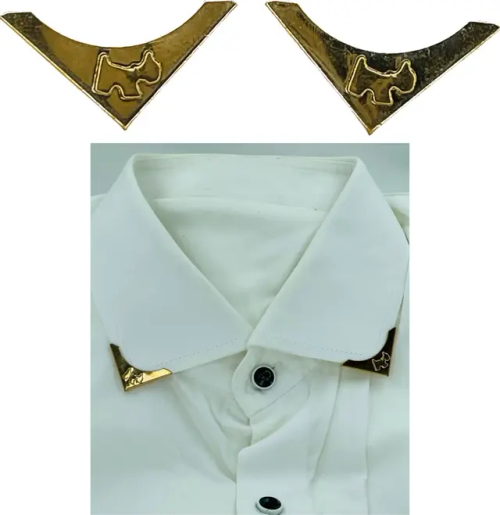
Sweater clips/guards: meant to hold your sweater or cardigan mostly closed. Great if your cardigan doesn't button, or if you don't like it to be buttoned all the way.
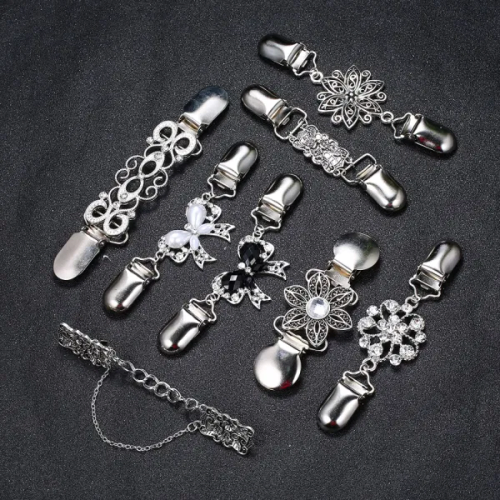
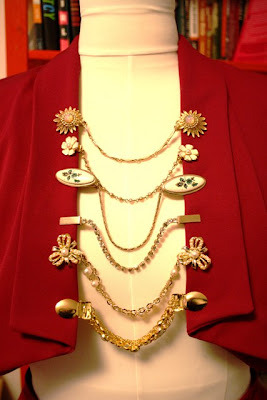
There's tons of other stuff out there like this--etsy is a great place to find this stuff. A lot of these are old solutions to the very modern problem of mass-maufactured clothes not being as one-size-fits-all as advertised, but they're also a fun way to put a bit of personality into businesswear.
my secret to art happiness is it's not about how many notes what you draw is likely to get. t's about how many times you're going to go back to it, to your own art, and think "this FUCKS actually and caters to me entirely, specifically, fully. i love this artist (me) (me who i drew this) (myself)"

I had a really good support Sett last night

You can actually only call it hubris if the gods/consequences ever catch you. Otherwise it's just sparkling genius.
finding out there's a frankenstein ballet and that it was in october of last year…DEVASTATING



look at this. look at these. im foaming at the mouth





Allow me to introduce the biggest deal in Epheroute, Lab Boss Cheyen
Holding the highest influence and prestige in Epheroute due to his breakthroughs in lab-grown produce, if Cheyen says jump, researchers hoping to climb the hierarchy generally say 'how high, and what would you like me to measure while I do it?'. Holding onto power and influence is easier said than done but due to the sheer number of their patents now in wide use (and subsequent funding) and already being (everyone presumes) too mad to go irreparably madder, Cheyen has held onto authority longer than most lab bosses.
Interns fear them, nobody loves them, and his meteoric rise has given him an unethical mad scientist equivalent of rockstar status.
(designs are sketches/slightly differing as still exploring what works)

robert chouraqui in secret's fetish photo anthology, vol. 2
-
 violsva liked this · 3 weeks ago
violsva liked this · 3 weeks ago -
 wintergrey reblogged this · 3 weeks ago
wintergrey reblogged this · 3 weeks ago -
 pansyash liked this · 3 weeks ago
pansyash liked this · 3 weeks ago -
 gessorly reblogged this · 4 weeks ago
gessorly reblogged this · 4 weeks ago -
 nymphaliora liked this · 4 weeks ago
nymphaliora liked this · 4 weeks ago -
 oakandgumtrees reblogged this · 4 weeks ago
oakandgumtrees reblogged this · 4 weeks ago -
 poorlylaidplans reblogged this · 1 month ago
poorlylaidplans reblogged this · 1 month ago -
 theoretically-questionable liked this · 1 month ago
theoretically-questionable liked this · 1 month ago -
 cuteasamuntin liked this · 1 month ago
cuteasamuntin liked this · 1 month ago -
 realmarysue reblogged this · 1 month ago
realmarysue reblogged this · 1 month ago -
 spacemoineau liked this · 1 month ago
spacemoineau liked this · 1 month ago -
 mey51 liked this · 1 month ago
mey51 liked this · 1 month ago -
 lorddiamondpowder reblogged this · 1 month ago
lorddiamondpowder reblogged this · 1 month ago -
 lorddiamondpowder liked this · 1 month ago
lorddiamondpowder liked this · 1 month ago -
 moollyo12 reblogged this · 1 month ago
moollyo12 reblogged this · 1 month ago -
 moollyo12 liked this · 1 month ago
moollyo12 liked this · 1 month ago -
 ablovescrafting reblogged this · 1 month ago
ablovescrafting reblogged this · 1 month ago -
 ablovescrafting liked this · 1 month ago
ablovescrafting liked this · 1 month ago -
 caitycatrex liked this · 1 month ago
caitycatrex liked this · 1 month ago -
 lizardlycrimes reblogged this · 1 month ago
lizardlycrimes reblogged this · 1 month ago -
 lizardlycrimes liked this · 1 month ago
lizardlycrimes liked this · 1 month ago -
 sunlit-sonder reblogged this · 1 month ago
sunlit-sonder reblogged this · 1 month ago -
 sunlit-sonder liked this · 1 month ago
sunlit-sonder liked this · 1 month ago -
 rabbitindisguise reblogged this · 1 month ago
rabbitindisguise reblogged this · 1 month ago -
 a-softer-butch liked this · 1 month ago
a-softer-butch liked this · 1 month ago -
 carbonatedsoda reblogged this · 1 month ago
carbonatedsoda reblogged this · 1 month ago -
 storks-notlarks reblogged this · 1 month ago
storks-notlarks reblogged this · 1 month ago -
 tranquil-traveler liked this · 1 month ago
tranquil-traveler liked this · 1 month ago -
 starstrucksomehow reblogged this · 1 month ago
starstrucksomehow reblogged this · 1 month ago -
 starstrucksomehow liked this · 1 month ago
starstrucksomehow liked this · 1 month ago -
 meatiermeatball liked this · 1 month ago
meatiermeatball liked this · 1 month ago -
 absintherust liked this · 1 month ago
absintherust liked this · 1 month ago -
 riparoonie liked this · 1 month ago
riparoonie liked this · 1 month ago -
 realmarysue liked this · 1 month ago
realmarysue liked this · 1 month ago -
 tweedledj liked this · 1 month ago
tweedledj liked this · 1 month ago -
 spinachwrap liked this · 1 month ago
spinachwrap liked this · 1 month ago -
 geckospeaks liked this · 1 month ago
geckospeaks liked this · 1 month ago -
 iviarelleblr reblogged this · 1 month ago
iviarelleblr reblogged this · 1 month ago -
 panwithpots liked this · 1 month ago
panwithpots liked this · 1 month ago -
 hellllrazor reblogged this · 1 month ago
hellllrazor reblogged this · 1 month ago -
 romcomslutdotcom liked this · 1 month ago
romcomslutdotcom liked this · 1 month ago -
 saint-oleander liked this · 1 month ago
saint-oleander liked this · 1 month ago -
 bitching-stitching liked this · 1 month ago
bitching-stitching liked this · 1 month ago -
 imaginable-horror liked this · 1 month ago
imaginable-horror liked this · 1 month ago -
 hardtobeasaintdotmp3 liked this · 1 month ago
hardtobeasaintdotmp3 liked this · 1 month ago -
 talestobetold reblogged this · 1 month ago
talestobetold reblogged this · 1 month ago -
 talestobetold liked this · 1 month ago
talestobetold liked this · 1 month ago -
 magic-gps liked this · 1 month ago
magic-gps liked this · 1 month ago -
 faeline liked this · 1 month ago
faeline liked this · 1 month ago -
 sharpofteeth liked this · 1 month ago
sharpofteeth liked this · 1 month ago
Do not take anything from here. Kids, don't fucking speak to me. Pirate poet enthusiast.I know lore exists but that isn't going to make me learn it.
249 posts
